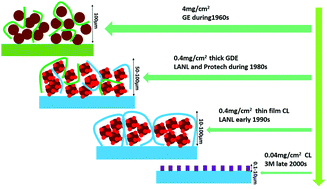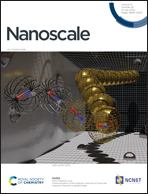Optimizing the structural design of a nanocomposite catalyst layer for PEM fuel cells for improving mass-specific power density
Abstract
For the purpose of redesigning a PEM fuel cell with ultralow Pt loading, this review comprehensively summarizes and comments on recent important findings on ultrathin catalyst layer structures. We introduce recent advances in electrocatalyst research and development (R&D), highlighting the urgency of ultralow Pt loading in the total design of PEM fuel cells. Following that, the reason for a thinner and more ordered electrode structure is presented for the next generation of PEM fuel cells. We then review recent progress in methods for preparing Pt nanoparticles on high-aspect-ratio supports, extended surface area of nanowires (confined agglomerates and nanowires) and ordered arrays. Regarding the ordered arrays, we expatiate on proton conductor arrays and electron conductor arrays, including carbon nanotube-assisted arrays, TiO2 nanotube-assisted arrays, Co-OH-CO3 nanowire-assisted arrays, and pigment red 149-assisted arrays. Challenges related to proton transport and transfer, electron conduction and mass transport are then discussed to supply further research direction.

- This article is part of the themed collection: Recent Review Articles


 Please wait while we load your content...
Please wait while we load your content...